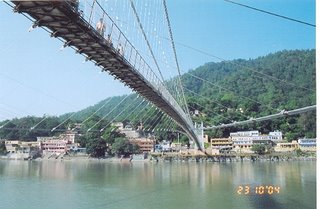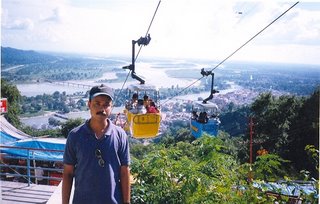As my train was chugging into the New Delhi railway station, several others trains cramped with passengers were waiting for signal to get into the station. Each of the train was bringing in at least a thousand of people to Delhi. Some had eager and worried faces, some were buzzing with excitement. Many of those in the trains are migrating to Delhi for in search of a livelihood. There were 3 such worried faces in the 2505-North East Express coming to Delhi from Guwahati some 8 years ago. One of them was mine; others were Sandip’s and Changka’s. It was not a sightseeing tour, but a job seeking one. The first priority was to find a low cost shelter. The search took us to a place called Munirka, located very close to the JN University (JNU) campus. The first time we were led to the room we were to hire, we stood dumbfound. For none of us ever had seen a house without any window. Honestly speaking, I never thought that anyone would build a house without window. We just look at each other, but had no option. So our life in Delhi started in a room that always had the halogen lamp on. After one month, my companions went back home leaving me alone in Delhi to fathom uncharted waters. There always had the temptation to run away to the comfort of my hometown. But thanks to something in me that goaded me to face it with courage and resolution. I had always listened to my inner voice and it had often helped me. That decision taken probably in my subconscious mind had changed my life. I started on a paltry salary of a bloodsucking private company having foreign links. Today I pay more than double what of I had earned in my first year of job as income tax. That was a forgettable past. But it linked Delhi to my life. What I am today is because of my decision to move to Delhi and more importantly to stay back and fight it out.
6 and 1/2 years after I left Delhi, destiny has brought me back to Delhi again. A move necessitated by job assignments. But this time to live a different life. From that dark one room shelter in Munirka, I have graduated to a spacious flat in the posh Patparganj societies. From having no option but to commute by bus, now I have both a car and a two wheeler. Only problem that was bothering me was driving on the roads of Delhi. Traffic is notorious in Delhi. Any bad driving is termed as ‘Delhiwalla type’. Of the total 4 km I need to traverse to reach office, 2 km is on the always busy Vikas Marg. To be on safer side, I started with my car for my first day on road. Honestly speaking it was not that tough. Driving was much easier than observing from pavements. I learned the simple funda very fast --- do not go to left, keep driving straight. There invariably will be some traffic on your left in your blind spot, most likely two wheelers which you can not see. Within a week, I had also started to come on my two wheeler as well. All one has to be careful about those bike riders who can not avoid zigzag driving even when traffic is flowing smoothly.
The transfer to Delhi was unexpected. When we got the message, there was lot of apprehension of a life in metro. That too in a city like Delhi which is growing in notoriety for its crime against women. For the last few years we had been living small town where life had been easier. It would be a culture shock but I felt that is needed to overcome those fear. My second stint at Delhi has started well. I hope living a family life in Delhi will be a great experience.
6 and 1/2 years after I left Delhi, destiny has brought me back to Delhi again. A move necessitated by job assignments. But this time to live a different life. From that dark one room shelter in Munirka, I have graduated to a spacious flat in the posh Patparganj societies. From having no option but to commute by bus, now I have both a car and a two wheeler. Only problem that was bothering me was driving on the roads of Delhi. Traffic is notorious in Delhi. Any bad driving is termed as ‘Delhiwalla type’. Of the total 4 km I need to traverse to reach office, 2 km is on the always busy Vikas Marg. To be on safer side, I started with my car for my first day on road. Honestly speaking it was not that tough. Driving was much easier than observing from pavements. I learned the simple funda very fast --- do not go to left, keep driving straight. There invariably will be some traffic on your left in your blind spot, most likely two wheelers which you can not see. Within a week, I had also started to come on my two wheeler as well. All one has to be careful about those bike riders who can not avoid zigzag driving even when traffic is flowing smoothly.
The transfer to Delhi was unexpected. When we got the message, there was lot of apprehension of a life in metro. That too in a city like Delhi which is growing in notoriety for its crime against women. For the last few years we had been living small town where life had been easier. It would be a culture shock but I felt that is needed to overcome those fear. My second stint at Delhi has started well. I hope living a family life in Delhi will be a great experience.



